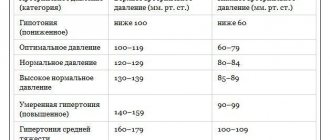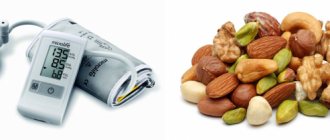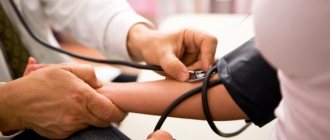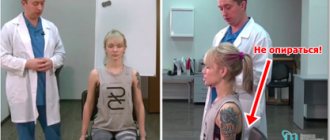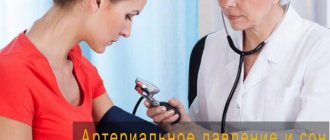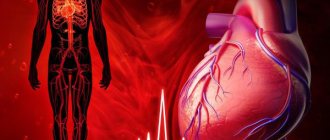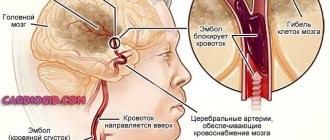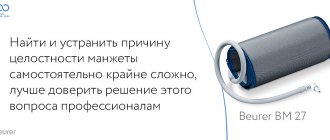The first drug with 2000% bioavailability
As long as you wait, your chances of getting rid of hypertension are decreasing!
To learn more…
One of the most common causes of death on the planet is diseases of the cardiovascular system. Among them are coronary heart disease and hypertension. It is important to understand what to do during attacks of high blood pressure, how to cure the pathology, and what a pressure of 140 to 110 means.
Normal or deviation
At a pressure of 140 to 110, doctors note a pathological characteristic. Normally, in healthy people, the difference between systolic and diastolic readings should be 40-45 mm Hg. Art. With a pressure of 140/110 mm Hg. Art. the difference is 30 units, which indicates the possible occurrence of isolated hypertension. In addition, with such indicators and a pulse of 140 beats, this is a mixed type of hypertension. This is due to the fact that the systolic unit refers to the 1st degree of hypertension, and the diastolic unit refers to a severe form of grade 3 hypertension.
Pulsation with 140 beats/min. indicates tachycardia, in other words, a disturbance in heart rhythm. This condition can appear suddenly, but disappears just as quickly. The passage time depends on various factors and can be up to several days.
Treatment of arterial hypertension
Arterial hypertension requires competent and comprehensive treatment. However, first of all, it is necessary to establish the reasons that contribute to the increase in blood pressure. For these purposes, patients are prescribed the following types of diagnostic studies:
- Electrocardiogram;
- Blood tests for hormones;
- Ultrasound examination of the renal apparatus.
Based on the results of a comprehensive medical examination, the doctor develops for the patient the most effective and safe therapeutic course in a particular clinical case.
In order to reduce blood pressure of 140/110, drug therapy alone will not be enough; lifestyle adjustments will be required.
To normalize their condition, patients should pay attention to the following recommendations from specialists:
- Give the body moderate, but regular and systematic physical activity;
- Quit cigarettes;
- Refrain from drinking alcoholic beverages;
- Exclude coffee, pastries, fatty and fried foods, pickles, and canned food from the daily menu.
The basis of the diet should be fresh vegetables and fruits, rich in vitamins, minerals, and plant fiber.
Moderate physical activity is beneficial at any age
Possible danger
It is important to know!
STILL STRUGGLE WITH ARTERIAL HYPERTENSION INCORRECTLY? The first bioavailable drug with proven effectiveness Read more »
It should be noted that an increase in pressure always promises a certain danger for a person. At a value of 140/110 mm Hg. Art. The patient will initially have no obvious symptoms. The danger lies in the wear and tear of the heart muscles; it needs to work more actively to provide blood and oxygen to important organs and tissues. Thus, the heart is in constant work, which leads to its changes. If the patient remains inactive, then after some time the ability to work will be completely lost, blood clots and a heart attack will begin to appear.
When the pressure rises to 140 to 110, blood flow is disrupted, which negatively affects the blood vessels. With prolonged progression of this condition, atherosclerosis develops, leading to stroke, hemorrhage, and necrosis.
How does a person feel?
With figures of 140/115 mm Hg, the patient can feel quite satisfactory. However, you need to pay attention to the following symptoms:
- rapid pulse;
- increased sweating;
- nausea;
- decreased concentration;
- pain in the heart area;
- trembling of limbs;
- migraine;
- blurred vision;
- the sound of chattering in the ears;
- frequent urination.
These signs of high blood pressure cannot be ignored and, if they appear regularly, you should go to the hospital.
Don't tolerate high blood pressure
Now hypertension can be cured by restoring blood vessels...
>
Causes of pressure 140 to 110
Often, with the development of kidney problems and diseases, patients’ blood pressure begins to increase, and often the lower one.
Indicators of 140 to 110 indicate not only kidney disease, the reasons may be different:
- Diseases of the endocrine system.
- Disruption of the thyroid gland.
- Hereditary predisposition.
- Pregnancy.
- Hormonal disorders.
- Diabetes.
- Constant stress, emotional tension.
- Unbalanced diet, especially if it contains a lot of salt.
- Bad habits, including frequent drinking of coffee.
- Excess weight, it has been proven that every extra kilogram increases blood pressure by 2 units.
- Insufficient activity.
- Changes in weather conditions.
- Lack of sleep.
- Age.
If constant pressure measurements show 140/110 mmHg. Art., then doctors diagnose hypertension.
It can be of several degrees:
- Stage 1 is the mildest, it can be easily cured by changing your lifestyle and diet. You will need to constantly monitor your blood pressure.
- 2nd degree – characterized by high pressure levels, when the upper value can increase to 160 mm Hg. Art., and diastolic up to 120 mm Hg. Art. In the second degree, patients cannot cope without medical assistance, since they need to take medications to normalize the indicators.
- 3rd degree - appears at frequent pressures of 160-180/110-120 mm Hg. Art. The patient’s life begins to become more complicated, since he must take pills and constantly undergo treatment in a hospital setting. By constantly measuring blood pressure, complications can be avoided.
Knowing the possible causes of the pathology, complications can be excluded. Of course, if we are talking about age-related changes in indicators, then nothing can be done about it. The problem is that any person ages, this applies to blood vessels and internal organs. Due to aging, the walls of blood vessels become smaller and their elasticity is lost.
What are the causes of increased blood pressure?
In the modern world of medicine, a distinction is made between secondary and essential hypertension. Secondary hypertension develops as a consequence of various diseases, these include:
- Kidney diseases: pyelonephritis, glomerulonephritis.
- Vascular pathology: renal artery stenosis, coarctation of the aorta.
- Endocrine disorders: thyroid disease, pheochromacytoma, Itsenko-Cushing's disease.
The actual diagnosis of essential hypertension is made after all causes of secondary hypertension have been excluded. It has not yet been established why a person develops primary hypertension, but the risk factors have been clearly established:
- floor;
- age;
- heredity;
- smoking;
- hypodynamia - insufficient physical activity;
- overweight;
- excessive salt intake;
- dyslipidemia - a disorder of fat metabolism in the body;
- concomitant diseases, for example, such as diabetes.
And also read on our website: What does blood pressure of 120 over 60 mean and what does it mean, and what to do if you have dizziness and headaches?
Hypertension during pregnancy
Pregnancy for a woman means that all systems in her body begin to work differently, adapting to carrying a baby. It is during this period of life that some diseases may appear. Hypertension is one of them. It can go away with childbirth, or it can stay with the woman for life.
During pregnancy, doctors especially monitor women's blood pressure. And not in vain, any increase in pressure during this period affects not only the mother, but also the baby. The risk of developing preeclampsia, convulsions, fainting, complications during childbirth increases, and due to narrowed blood vessels of the placenta, the baby will not receive many nutrients and oxygen.
Symptoms
Symptoms with a pressure of 140 to 110 are not always quickly determined, since they are mild.
Possible signs of growth in indicators include:
- Dizziness.
- The pain in the head is quite severe, pulsating in nature, which is concentrated in any part of the head. With exercise, the symptom becomes even stronger.
- Fainting state.
- Tinnitus due to significant weakness.
- Darkening in the eyes.
- Changes in heart rhythm, increased pulse.
- Pain syndrome in the chest area from the side of the heart.
- Nausea and vomiting.
- Heavy sweating.
- Frequent urination, while the urine density will be small, with an admixture of protein, which can be identified by its white color.
- Change in gait, loss of coordination.
- Problems with vision, loss of sharpness, possible darkening of the eyes.
- Deterioration of memory and concentration.
- Trembling in arms and legs.
Blood pressure of 140 to 110 can occur during pregnancy, and it can also fluctuate. This happens to almost every woman, as the stress on the body and internal organs becomes greater. All systems work for 2 organisms, so a slight increase in indicators is possible. As a rule, the growth will be joint, in other words, the systolic and diastolic values are steadily increasing.
During pregnancy, blood pressure rises to 140/110 mmHg. Art. should be discussed with a doctor, especially if the indicator lasts for a long time, more than 5 hours.
You should consult a doctor if unpleasant symptoms appear:
- Headache.
- Heart pain.
- Weakness.
- Dizziness.
Arrhythmia often develops during pregnancy; it is typical for the 6-month period and can indicate various pathologies. It is necessary to immediately consult a doctor to avoid complications and negative consequences for the child and mother. Pregnant women should regularly visit a doctor if there is a risk of pressure surges. With hypertension in the mother, the fetus may have cardiac arrest as a result of impaired blood circulation.
Home treatment
In addition to drug treatment, you can use traditional medicine methods. The simplest and most accessible of them are:
- Brew tea from herbs with diuretic and sedative effects (peony, valerian root, motherwort, fireweed, oregano, sage). Drink a mug of the product per day.
- 200 ml. Mix freshly squeezed cranberry juice with the same amount of high-quality honey. Take a dessert spoon of the product three times a day.
- Grind 100 grams of pumpkin seeds, pour in 0.5 liters of good vodka, and place in the dark for 20 days. Drink a dessert spoon of tincture twice a day for 3 weeks.
- Dilute pomegranate juice with clean water without gas. Drink a glass every day.
- Grind 100 grams of garlic, add two glasses of water, leave overnight. Drink two spoons of the product per day.
- Grate the horseradish root on a fine grater, add a cup of clean water, leave for a day. Mix with the juice of one carrot and beetroot. Take before lunch and dinner.
- A completely safe method is aromatherapy. You need to pour a few drops of essential oil, such as mint, into the aroma lamp bowl, dilute it with water, light a candle under the container and place the lamp in the middle of the room. The duration of the procedure is two hours.
All of these methods can be used only after the doctor’s permission.
What to do if the pressure is 140 to 110
The first step when registering a pressure of 140 to 110 is to undergo a thorough diagnosis in a medical institution, which will determine the exact causes of the attacks.
For this, doctors use the following methods:
- Blood and urine analysis.
- Ultrasound of the heart, kidneys, and possibly other organs.
- ECG.
- Radiography.
In addition to treatment, you will need to give up unhealthy foods and adhere to the diet prescribed by your doctor. You should definitely give up bad habits and add more vitamins and minerals.
Therapy with a doctor
Before prescribing adequate therapy, the specialist diagnoses the patient. It includes:
- inspection and survey;
- blood pressure measurement;
- taking tests;
- electrocardiogram;
- consultations with various doctors (for example, a cardiologist or neurologist).
If necessary, additional studies may be prescribed. After receiving all the results, individual treatment will be prescribed, which depends on the severity of the condition and the severity of symptoms. Usually a regimen is prescribed that combines several drugs. For example, it is customary to combine:
- any beta blocker (Concor, Egilok and others);
- diuretic (Furosemide, Hypothiazide, etc.);
- angiotensin receptor blocker (Perindopril, etc.).
This combination will help dilate blood vessels and normalize blood pressure. Sometimes, in order to avoid the progression of hypertension and its transition to a more severe degree, medications are recommended for lifelong use.
First aid
If there is a sharp increase in pressure to 140/110 mm Hg. Art., and the body’s condition becomes poor, there are certain symptoms, then you will need:
- Place the patient on a bed or sofa, preferably raising his legs so that the blood comes to the head.
- Open all the windows in the room to let in more fresh air.
- Do not give blood pressure lowering medications unless they are prescribed by a doctor for treatment. Self-administration of antihypertensive pills leads to worsening of the condition. Not only the lower pressure decreases, but also the upper one, weakness appears, and fainting may occur.
- It is recommended to give a decoction based on herbs, for example, motherwort, mint, lemon balm or valerian or other plants that have a sedative effect. These tools will allow you to relax and not panic.
- Make a warm bath and soak your feet in it for 5-10 minutes.
- You can sit the patient on a chair, lower his head down, and put ice or another type of cold on his neck for about half an hour. Then give a light massage.
Such measures will reduce blood pressure and improve well-being. If the patient is very ill and the tonometer indicates 140/110 mmHg. Art., you will need to call an ambulance before using the described actions. The dispatcher can tell you exactly what to do before the doctors arrive.
Treatment of hypertension
The International Society of Cardiology has proven that lifestyle correction reduces blood pressure by an average of 5-10 mmHg. Art. These are the following events:
- increasing daily physical activity - at least 10,000 steps per day or about 40 minutes of walking;
- reducing salt intake to 5 grams per day;
- replacing fatty meats and fish with less fatty foods;
- weight loss;
- smoking cessation
- giving up alcohol.
Medicines
In modern treatment of hypertension, several groups of drugs are used:
- slow calcium channel antagonists;
- beta blockers;
- angiotensin-converting enzyme inhibitors;
- angiotensin II receptor blockers or sartans;
- diuretics.
Folk recipes
There are many folk recipes that are successfully used in the fight against hypertension. In this section we will give examples of the most popular of them.
Hawthorn flower infusion
Rinse hawthorn flowers in clean water.
Pour boiling water over it and let it brew for half an hour. Take 100 grams 2 times a day before meals for 1-2 months. Then you need to take a break for 2-3 months, and the course can be repeated.
And also read on our website: What to do when very low pressure is 100 to 40? Why are such indicators dangerous and what are the reasons?
Herbal infusion
St. John's wort - 100 g, chamomile flowers - 100 g, immortelle inflorescences - 100 g. The mixture of herbs and flowers is poured into 500 ml of boiling water, left for 30 minutes. Take 50 ml 2 times a day 20-30 minutes before meals for 30-60 days. Break 3-4 months.
Motherwort tincture
Mix 20 drops of motherwort tincture with 100 grams of water. Take 30-40 minutes before meals 3 times a day for 2-3 months. The course can be repeated after 2 months.
Medicines
IT IS IMPORTANT TO KNOW!
STILL STRUGGLE WITH ARTERIAL HYPERTENSION INCORRECTLY? Reduces stress hormone levels and prevents oxygen starvation Read more »
There are no medications in medical practice yet that can affect individual pressure indicators, reducing only the upper or lower ones. All drugs affect both values, so the doctor must choose them based on the specific case and reasons.
In case of headache with pressure, it is recommended to take antispasmodics. If the diastolic indicator is high, then No-shpa and Papaverine are ideal.
A large number of medications are produced to treat hypertension. Each drug belongs to a specific group, each has a different effect.
As a rule, for hypertension, doctors prefer to prescribe:
- Beta blockers - Kokkor, Egilok.
- ACE inhibitors – Enapril, Perindopril.
- Diuretics – Arifon, Hypothiazide.
The doctor may also prescribe other medications. They can be used individually or in combination, the choice is individual.
What medications to take if the tonometer readings are 140/110
Drug therapy for isolated arterial hypertension is complicated by the fact that there are no drugs whose action is aimed solely at lowering lower blood pressure levels. For this reason, all antihypertensive drugs should be prescribed by a doctor on an individual basis.
In most cases, doctors recommend that patients take the following medications if their blood pressure is 140/110:
- Diuretics (Arifon, Hypothiazide);
- Adrenergic receptor blockers (Egilok, Concor);
- ACE inhibitors (Lisinopril, Enalapril, Perindopril).
The dosage of antihypertensive medications and the duration of the therapeutic course are also set individually, taking into account all the features of a particular clinical case!
If blood pressure readings of 140/110 are accompanied by severe headaches, it is recommended to take a No-Shpa or Papaverine tablet.
